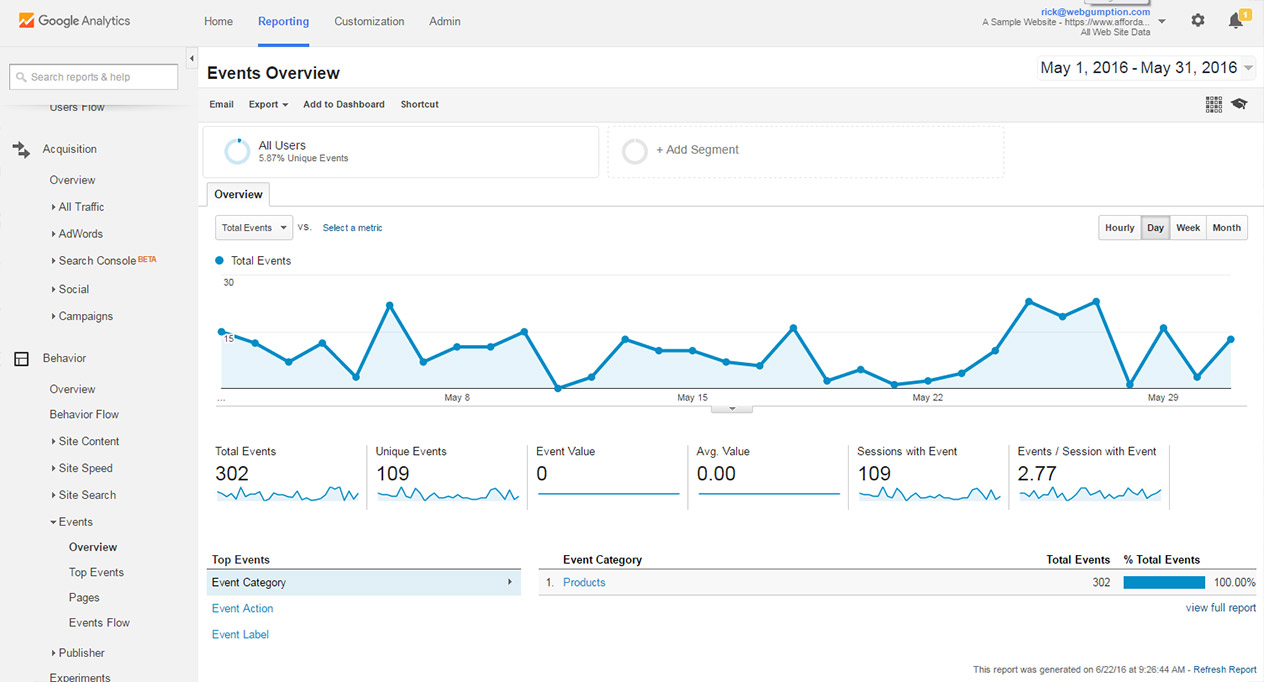Some Known Details About Google Analytics Event Tracking
Table of ContentsNot known Factual Statements About Google Analytics Event Tracking Google Analytics Event Tracking Things To Know Before You Get ThisThe Basic Principles Of Google Analytics Event Tracking Not known Details About Google Analytics Event Tracking 9 Easy Facts About Google Analytics Event Tracking ShownWhat Does Google Analytics Event Tracking Mean?

If you're going to establish event tracking by hand, after that you're going to have to add some extra code to the elements you wish to gather data from. The code you're mosting likely to collaborate with will certainly look something such as this: There are 4 elements within that code fragment that you're going to need to specify on your own: event, Classification, event, Action, event, Label and event, Value.
As you can see, 2 of these are called for (category and action) while label and value are optional. All of it depends on the sort of information you desire passed on back to Google Analytics when a user clicks on the defined component (Google Analytics Event Tracking). It will be a lot less complicated to define these elements if you analyse your web site and decide which elements/actions you want to track
Examine This Report on Google Analytics Event Tracking
Now, you'll be asked to define the and and you'll wish to pick from the drop-down menu that appears when you click on. This will certainly raise the same event tracking elements we looked at earlier, which you'll need to complete. When you have actually specified these, you can move to the second box and select the trigger that will discharge your tag.
On the next screen, you'll additionally have a field for naming your trigger and, if you click the box, you'll see a listing of the different triggers you can select. In this instance, we want to pick and afterwards choose the choice below. You'll set the trigger to only terminate when a component is clicked with a Link that has the.
Easy - Occasion monitoring! Event monitoring offers you an image of how customers involve with your web site and organization. Read on as we explore everything you require to recognize, including what it is, why you should track occasions, just how to take care of occasions information, and other relevant Frequently asked questions you may have.
The Greatest Guide To Google Analytics Event Tracking
You can switch in between your event classifications, actions, and tags in the Leading Events report. This report is critical for excavating even more into research study on a details occasion classification. The Event Pages record shows the pages where occasions are triggered. In this see this page area, we can analyze the top web pages that drive events.
Events in Google Analytics have four primary aspects. Google Analytics uses these codes to track individual communications and group them into occasion records (Google Analytics Event Tracking).
A list of the criteria you can track on your web site is on the. After checking all needed fields, you can click "X" to shut the window and return to the Introduction food selection on the.
Getting My Google Analytics Event Tracking To Work

Selecting "False" will avoid that session from being a bounce. If you haven't done so, you might need to set up a variable in the Google Analytics Settings box. Click "New Variable ..." if you can't discover one to select. Hereafter, enter your GA monitoring ID in the Tracking ID area.
To do this, comply with the following collection of activities: After configuring the areas, choose the "Triggering" area. When configuring your investigate this site brand-new trigger, click the "+" switch, after that the "pencil" button, after that pick your trigger kind.
Google Analytics Event Tracking for Dummies

When it comes to recognizing which sections and elements are guiding consumers via your conversion funnel, you still won't understand. Without occasion tracking, GA reports will only count gos to as single-page sessions, even if individuals invest a great deal of time on one web page and engage with it significantly (and a bounce).
However just how does occasion monitoring attain this?Single-page sessions called bounces start and conclude on the same web page. Without occasion tracking, GA will certainly categorize a user's go to as a bounce if they don't browse to another web page, despite just how they connect with it. A video-rich page can have a greater bounce price if events are not tracked.
The Definitive Guide for Google Analytics Event Tracking
However, for GA to take occasion hits right into account when determining bounce rates, you you can try these out should pick "Non-interaction occasion" as "False" during the GTM setup. Establishing "occasion goals" with occasion activity is an outstanding means to keep an eye on customer activities you value very, such as new lead entries or clicks on a phone call to action.